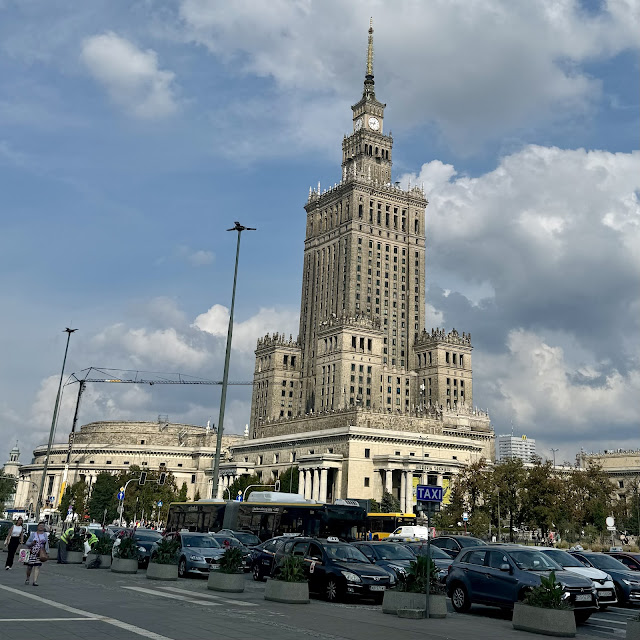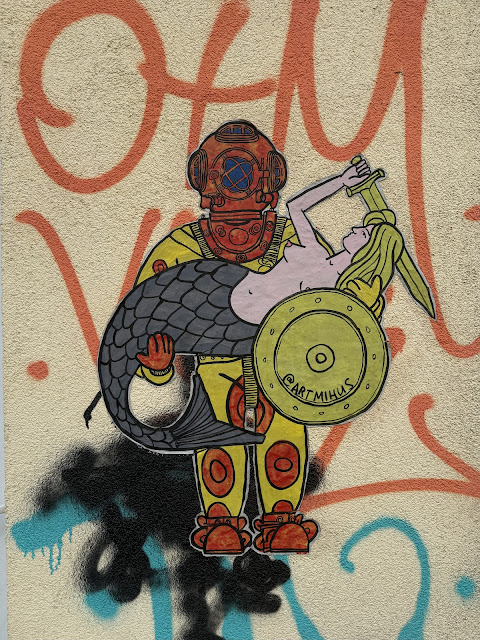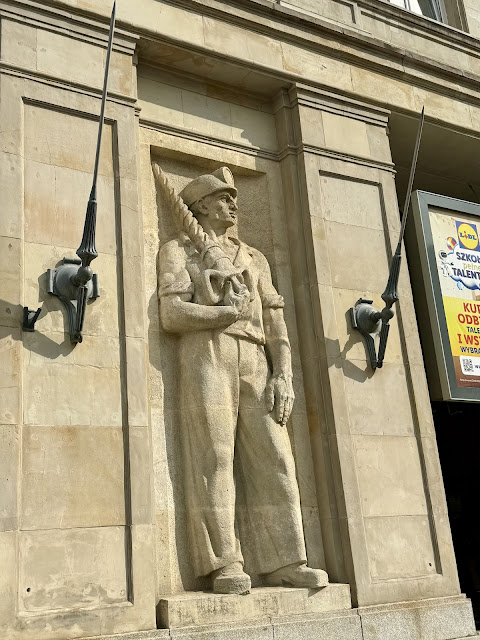It loomed before us as soon as we exited the train station: the Palace of Culture & Science. An infamous Soviet dictator's name preceded it until shortly after completion of the building in 1955, thanks to destalinization. It reminds me of the skyscraper in Gotham City, the one police use to project the Batman symbol when summoning help from the caped crusader.
When I photographed this graffiti, I didn't know that the mermaid has symbolized land-locked Warsaw since the 17th century when she first turned up in the net of a man fishing in the Vistula River. Some people believe she's the sister of the one gracing Copenhagen's harbor. I first made her acquaintance as a small child.
It took longer than expected to reach the park's Palace on the Isle.
Although the retreating Nazis destroyed everything inside, they never got around to blowing up the exterior which makes it one of the few buildings in Warsaw to have survived the war.
Now that's what I call a door knocker.
Łazienki Park is the city's largest.
The mold for the statue survived, so the Poles were able to recast it in 1958, adding an inscription attributed to Adam Mickiewicz, the nation's greatest poet. It reads: Flames will consume our painted history, sword-wielding thieves will plunder our treasures, the song will be saved . . .
We stayed at the MDM Hotel on Constitution Square, constructed during the 1950s in the socialist realist style.
Larger-than-life statues of Soviet workers adorn the facade.
The classical beauty of the nearby University of Technology--one of Eastern Europe's largest--belies its near destruction after the Warsaw Uprising.
More Poland
Gdansk:
Kraków:













No comments:
Post a Comment